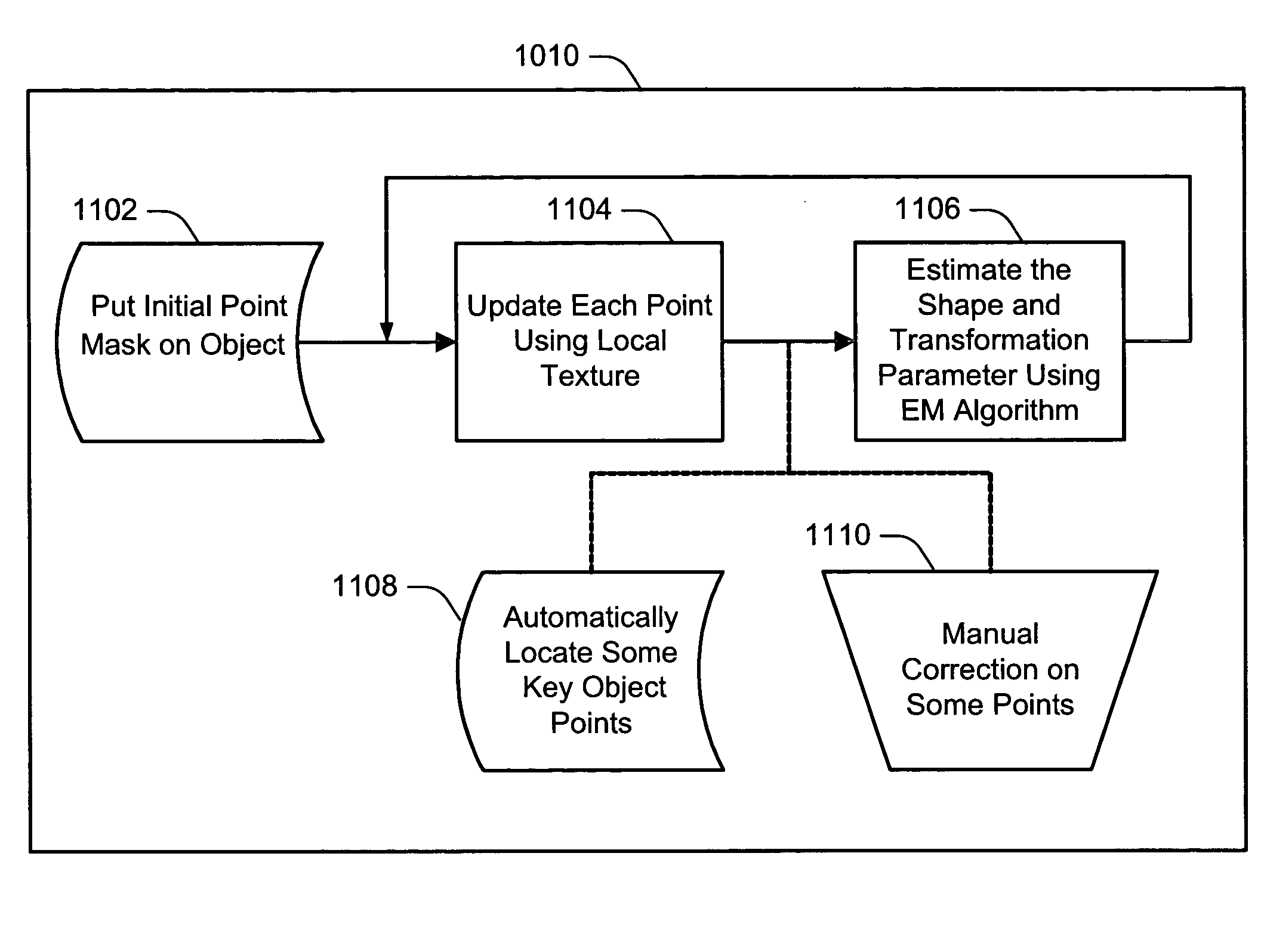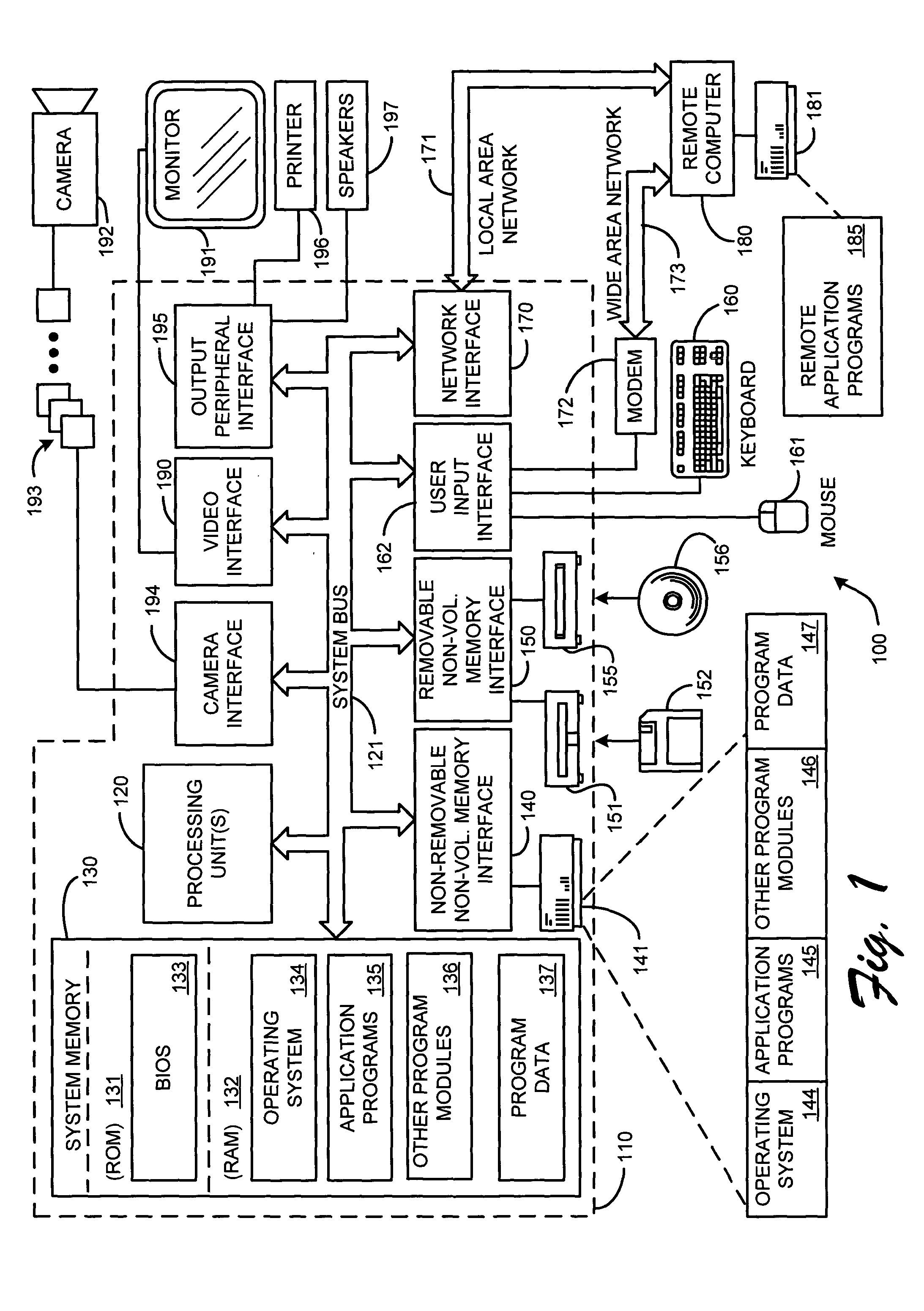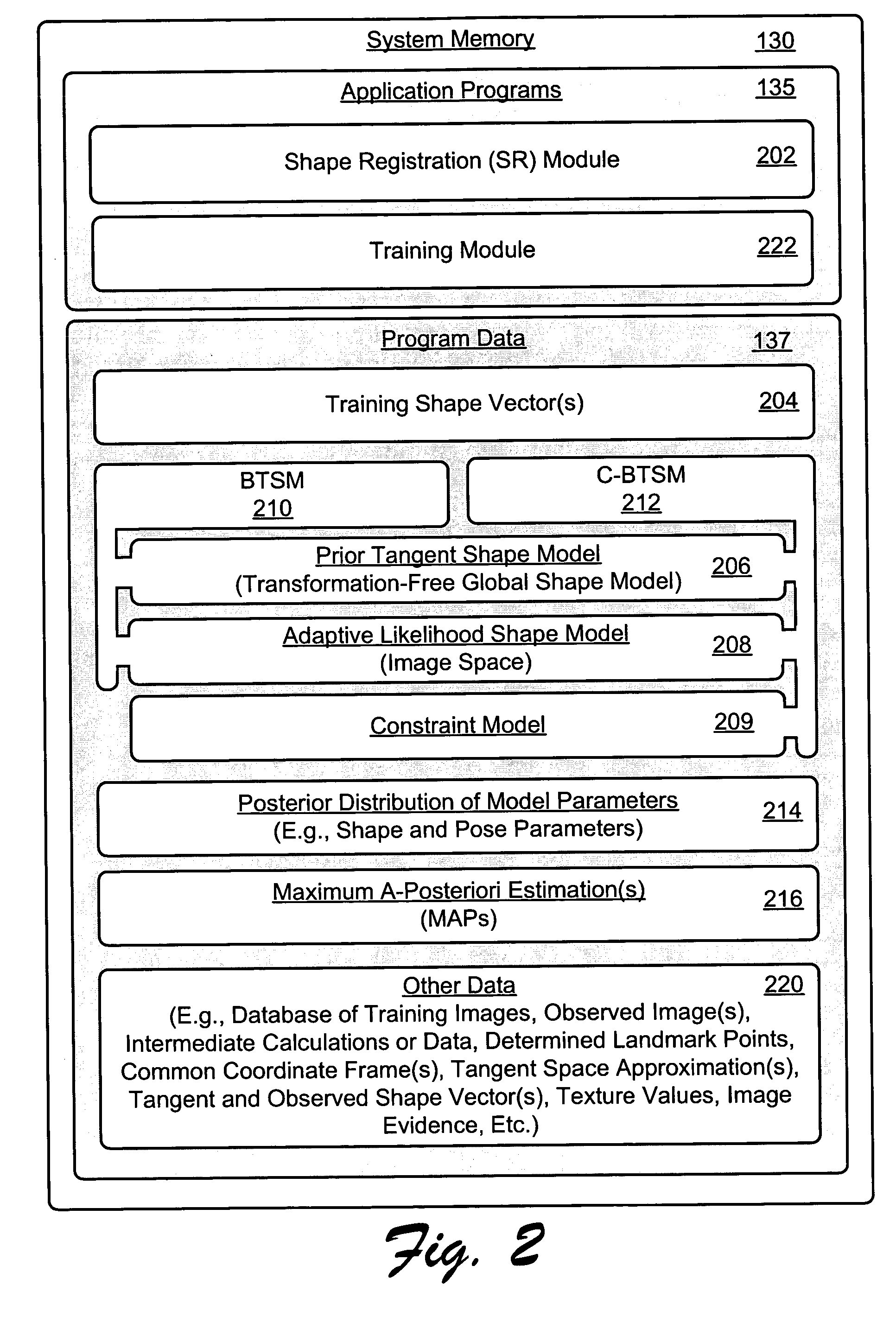Unified bayesian framework for shape registration
- Summary
- Abstract
- Description
- Claims
- Application Information
AI Technical Summary
Benefits of technology
Problems solved by technology
Method used
Image
Examples
Embodiment Construction
Overview
Systems and methods for a unified probabilistic Bayesian framework for shape registration are described. In particular, a Bayesian Tangent Shape Model (BTSM) is used to integrate a prior of shape distribution represented in tangent shape space with an adaptive likelihood of shape observation in a observed image space. That is, the framework unifies the priors of tangent shape in tangent shape space with the likelihood of tangent shape in image space. Similarity-transform coefficients and shape parameters in BTSM are determined by maximum a-posteriori (MAP) estimation. BTSM probability formulation incorporates parameter priors and an adaptive interaction mechanism into shape registration. A constrained BTSM (C-BTSM) adds flexibility to the shape registration with additional parameter priors. As such, tangent shape vectors in a given image space represent BTSM and C-BTSM hidden states. For purposes of discussion and unless otherwise indicated, BTSM and the C-BTSM are often ...
PUM
 Login to View More
Login to View More Abstract
Description
Claims
Application Information
 Login to View More
Login to View More - R&D
- Intellectual Property
- Life Sciences
- Materials
- Tech Scout
- Unparalleled Data Quality
- Higher Quality Content
- 60% Fewer Hallucinations
Browse by: Latest US Patents, China's latest patents, Technical Efficacy Thesaurus, Application Domain, Technology Topic, Popular Technical Reports.
© 2025 PatSnap. All rights reserved.Legal|Privacy policy|Modern Slavery Act Transparency Statement|Sitemap|About US| Contact US: help@patsnap.com



